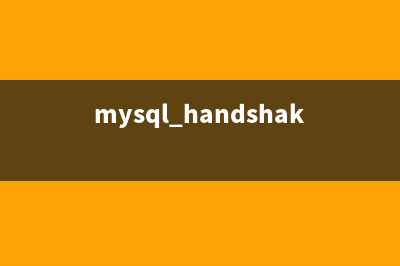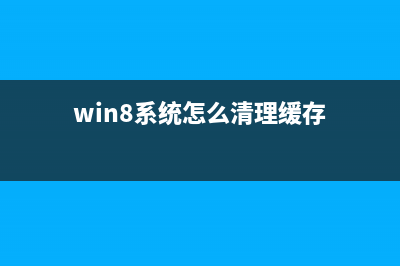位置: 编程技术 - 正文
Unity协程(Coroutine)原理深入剖析再续(unity协程会阻塞主线程吗)
编辑:rootadmin推荐整理分享Unity协程(Coroutine)原理深入剖析再续(unity协程会阻塞主线程吗),希望有所帮助,仅作参考,欢迎阅读内容。
文章相关热门搜索词:unity协程会阻塞主线程吗,Unity协程和线程的区别,unity协程的工作原理,Unity协程堵塞情况,unity中协程,Unity协程和线程的区别,unity协程的工作原理,Unity协程和线程的区别,内容如对您有帮助,希望把文章链接给更多的朋友!
本文主要分为三部分:
1)yield return, IEnumerator 和 Unity StartCoroutine 的关系和理解
2)Cortoutine 扩展——Extending Coroutines: Return Values and Error Handling
3)Cortountine Locking
总之,引用③的一句话:Coroutines – More than you want to know.
1)yield return, IEnumerator 和 Unity StartCoroutine 的关系和理解
yield 和 IEnumerator都是C#的东西,前者是一个关键字,后者是枚举类的接口。对于IEnumerator 只引用②对 IEnumerable与IEnumerator区别 的论述:
先贴出 IEnumerable 和 IEnumerator的定义:
C#代码 public interface IEnumerable { IEnumerator GetEnumerator(); } public interface IEnumerator { bool MoveNext(); void Reset(); Object Current { get; } }IEnumerable和IEnumerator有什么区别?这是一个很让人困惑的问题(在很多forum里都看到有人在问这个问题)。研究了半天,得到以下几点认识:
1、一个Collection要支持foreach方式的遍历,必须实现IEnumerable接口(亦即,必须以某种方式返回IEnumerator object)。
2、IEnumerator object具体实现了iterator(通过MoveNext(),Reset(),Current)。
3、从这两个接口的用词选择上,也可以看出其不同:IEnumerable是一个声明式的接口,声明实现该接口的class是“可枚举(enumerable)”的,但并没有说明如何实现枚举器(iterator);IEnumerator是一个实现式的接口,IEnumerator object就是一个iterator。
4、IEnumerable和IEnumerator通过IEnumerable的GetEnumerator()方法建立了连接,client可以通过IEnumerable的GetEnumerator()得到IEnumerator object,在这个意义上,将GetEnumerator()看作IEnumerator object的factory method也未尝不可。
IEnumerator 是所有枚举数的基接口。
枚举数只允许读取集合中的数据。枚举数无法用于修改基础集合。
最初,枚举数被定位于集合中第一个元素的前面。Reset 也将枚举数返回到此位置。在此位置,调用 Current 会引发异常。因此,在读取 Current 的&#;之前,必须调用 MoveNext 将枚举数提前到集合的第一个元素。
在调用 MoveNext 或 Reset 之前,Current 返回同一对象。MoveNext 将 Current 设置为下一个元素。
在传递到集合的末尾之后,枚举数放在集合中最后一个元素后面,且调用 MoveNext 会返回 false。如果最后一次调用 MoveNext 返回 false,则调用 Current 会引发异常。若要再次将 Current 设置为集合的第一个元素,可以调用 Reset,然后再调用 MoveNext。
只要集合保持不变,枚举数就将保持有效。如果对集合进行了更改(例如添加、修改或删除元素),则该枚举数将失效且不可恢复,并且下一次对 MoveNext 或 Reset 的调用将引发 InvalidOperationException。如果在 MoveNext 和 Current 之间修改集合,那么即使枚举数已经无效,Current 也将返回它所设置成的元素。
枚举数没有对集合的独占访问权;因此,枚举一个集合在本质上不是一个线程安全的过程。甚至在对集合进行同步处理时,其他线程仍可以修改该集合,这会导致枚举数引发异常。若要在枚举过程中保证线程安全,可以在整个枚举过程中锁定集合,或者捕捉由于其他线程进行的更改而引发的异常。
Yield关键字
在迭代器块中用于向枚举数对象提供&#;或发出迭代结束信号。它的形式为下列之一⑥:
yield return <expression_r>;
yield break;
备注 :
计算表达式并以枚举数对象&#;的形式返回;expression_r 必须可以隐式转换为迭代器的 yield 类型。
yield 语句只能出现在 iterator 块中,该块可用作方法、运算符或访问器的体。这类方法、运算符或访问器的体受以下约束的控制:
不允许不安全块。
方法、运算符或访问器的参数不能是 ref 或 out。
yield 语句不能出现在匿名方法中。
当和 expression_r 一起使用时,yield return 语句不能出现在 catch 块中或含有一个或多个 catch 子句的 try 块中。
yield return 提供了迭代器一个比较重要的功能,即取到一个数据后马上返回该数据,不需要全部数据装入数列完毕,这样有效提高了遍历效率。
Unity StartCoroutine
Unity使用 StartCoroutine(routine: IEnumerator): Coroutine 启动协程,参数必须是 IEnumerator 对象。那么Unity在背后做什么神奇的处理呢?
StartCoroutine函数的参数我一般都是通过传入一个返回&#;为 IEnumerator的函数得到的:
C#代码 IEnumerator WaitAndPrint(float waitTime) { yield return new WaitForSeconds(waitTime); print("WaitAndPrint " &#; Time.time); }在函数内使用前面介绍 yield 关键字返回 IEnumerator 对象,Unity 中实现了 YieldInstruction 作为 yield 返回的基类,有 Cortoutine, WaitForSecondes, WaitForEndOfFrame, WaitForFixedUpdate, WWW 几个子类实现。StartCoroutine 将 传入的 IEnumerator 封装为 Coroutine 返回,引擎会对 Corountines 存储和检查 IEnumerator 的 Current&#;。
③枚举了 WWW ,WaitForSeconds , null 和 WaitForEndOfFrame 检查 Current&#;在MonoBebaviour生存周期的时间(没有WaitForFixedUpdate ,D.S.Qiu猜测是其作者成文是Unity引擎还没有提供这个实现):

WWW - after Updates happen for all game objects; check the isDone flag. If true, call the IEnumerator's MoveNext() function;
WaitForSeconds - after Updates happen for all game objects; check if the time has elapsed, if it has, call MoveNext();
null or some unknown value - after Updates happen for all game objects; Call MoveNext();
WaitForEndOfFrame - after Render happens for all cameras; Call MoveNext().
如果最后一个 yield return 的 IEnumerator 已经迭代到最后一个是,MoveNext 就会 返回 false 。这时,Unity就会将这个 IEnumerator 从 cortoutines list 中移除。
所以很容易一个出现的误解:协程 Coroutines 并不是并行的,它和你的其他代码都运行在同一个线程中,所以才会在Update 和 Coroutine中使用 同一个&#;时才会变得线程安全。这就是Unity对线程安全的解决策略——直接不使用线程,最近Unity 5 将要发布说的很热,看到就有完全多线程的支持,不知道是怎么实现的,从技术的角度,还是很期待的哈。
总结下: 在协程方法中使用 yield return 其实就是为了返回 IEnumerator对象,只有当这个对象的 MoveNext() 返回 false 时,即该 IEnumertator 的 Current 已经迭代到最后一个元素了,才会执行 yield return 后面的语句。也就是说, yield return 被会“翻译”为一个 IEnmerator 对象,要想深入了解这方面的更多细节,可以猛击⑤查看。
根据⑤ C# in depth 的理解——C# 编译器会生成一个 IEnumerator 对象,这个对象实现的 MoveNext() 包含函数内所有 yield return 的处理,这里仅附上一个例子:
C#代码 using System; using System.Collections; class Test { static IEnumerator GetCounter() { for (int count = 0; count < ; count&#;&#;) { yield return count; } } }C#编译器对应生成:
Cpp代码 internal class Test { // Note how this doesn't execute any of our original code private static IEnumerator GetCounter() { return new <GetCounter>d__0(0); } // Nested type automatically created by the compiler to implement the iterator [CompilerGenerated] private sealed class <GetCounter>d__0 : IEnumerator<object>, IEnumerator, IDisposable { // Fields: there'll always be a "state" and "current", but the "count" // comes from the local variable in our iterator block. private int <>1__state; private object <>2__current; public int <count>5__1; [DebuggerHidden] public <GetCounter>d__0(int <>1__state) { this.<>1__state = <>1__state; } // Almost all of the real work happens here private bool MoveNext() { switch (this.<>1__state) { case 0: this.<>1__state = -1; this.<count>5__1 = 0; while (this.<count>5__1 < ) //这里针对循环处理 { this.<>2__current = this.<count>5__1; this.<>1__state = 1; return true; Label_B: this.<>1__state = -1; this.<count>5__1&#;&#;; } break; case 1: goto Label_B; } return false; } [DebuggerHidden] void IEnumerator.Reset() { throw new NotSupportedException(); } void IDisposable.Dispose() { } object IEnumerator<object>.Current { [DebuggerHidden] get { return this.<>2__current; } } object IEnumerator.Current { [DebuggerHidden] get { return this.<>2__current; } } } }从上面的C#实现可以知道:函数内有多少个 yield return 在对应的 MoveNext() 就会返回多少次 true (不包含嵌套)。另外非常重要的一点的是:同一个函数内的其他代码(不是 yield return 语句)会被移到 MoveNext 中去,也就是说,每次 MoveNext 都会顺带执行同一个函数中 yield return 之前,之后 和两个 yield return 之间的代码。
对于Unity 引擎的 YieldInstruction 实现,其实就可以看着一个 函数体,这个函数体每帧会实现去 check MoveNext 是否返回 false 。 例如:
C#代码 yield retrun new WaitForSeconds(2f);上面这行代码的伪代码实现:
C#代码 private float elapsedTime; private float time; private void MoveNext() { elapesedTime &#;= Time.deltaTime; if(time <= elapsedTime) return false; else return true; }增补于: 年月日 8:
2)Cortoutine 扩展——Extending Coroutines: Return Values and Error Handling
不知道你们调用 StartCortoutine 的时候有没有注意到 StartCortoutine 返回了 YieldInstruction 的子类 Cortoutine 对象,这个返回除了嵌套使用 StartCortoutine 在 yiled retrun StartCortoutine 有用到,其他情况机会就没有考虑它的存在,反正D.S.Qiu是这样的,一直认为物“极”所用,所以每次调用 StartCortoutine 都很纠结,好吧,有点强迫症。
Unity引擎讲 StartCoroutine 传入的参数 IEnumerator 封装为一个 Coroutine 对象中,而 Coroutine 对象其实也是 IEnumerator 枚举对象。yield return 的 IEnumerator 对象都存储在这个 Coroutine 中,只有当上一个yield return 的 IEnumerator 迭代完成,才会运行下一个。这个在猜测下Unity底层对Cortountine 的统一管理(也就是上面说的检查 Current &#;):Unity底层应该有一个 正在运行的 Cortoutine 的 list 然后在每帧的不同时间去 Check。
还是回归到主题,上面介绍 yield 关键字有说不允许不安全块,也就是说不能出现在 try catch 块中,就不能在 yield return 执行是进行错误检查。③利用 StartCortoutine 返回&#; Cortoutine 得到了当前的 Current &#;和进行错误捕获处理。
先定义封装包裹返回&#;和错误信息的类:
C#代码 public class Coroutine<T>{ public T Value { get{ if(e != null){ throw e; } return returnVal; } } private T returnVal; //当前迭代器的Current &#; private Exception e; //抛出的错误信息 public Coroutine coroutine; public IEnumerator InternalRoutine(IEnumerator coroutine){ //先省略这部分的处理 } }InteralRoutine是对返回 Current &#;和抛出的异常信息(如果有的话):
C#代码 public IEnumerator InternalRoutine(IEnumerator coroutine){ while(true){ try{ if(!coroutine.MoveNext()){ yield break; } } catch(Exception e){ this.e = e; yield break; } object yielded = coroutine.Current; if(yielded != null && yielded.GetType() == typeof(T)){ returnVal = (T)yielded; yield break; } else{ yield return coroutine.Current; } }下面为这个类扩展MonoBehavior:
C#代码 public static class MonoBehaviorExt{ public static Coroutine<T> StartCoroutine<T>(this MonoBehaviour obj, IEnumerator coroutine){ Coroutine<T> coroutineObject = new Coroutine<T>(); coroutineObject.coroutine = obj.StartCoroutine(coroutineObject.InternalRoutine(coroutine)); return coroutineObject; } }最后给出一个 Example:
C#代码 IEnumerator Start () { var routine = StartCoroutine<int>(TestNewRoutine()); //Start our new routine yield return routine.coroutine; // wait as we normally can Debug.Log(routine.Value); // print the result now that it is finished. } IEnumerator TestNewRoutine(){ yield return null; yield return new WaitForSeconds(2f); yield return ; yield return 5; }最后输出是,因为Cortoutine<T> 遇到满足条件的 T 类型就 执行 yield break;就不执行 yield return 5; 这条语句了。
如果将中 yield break; 语句去掉的话,最后输出的是 5 而不是。
C#代码 if(yielded != null && yielded.GetType() == typeof(T)){ returnVal = (T)yielded; yield break; }其实就是Unity引擎每帧去 check yield return 后面的表达式,如果满足就继续向下执行。
下面在测试一个例子:连续两次调用 yield return coroutine;
C#代码 private Coroutine routine1; void Start () { routine1 = StartCoroutine(TestCoroutineExtention1()); //Start our new routine StartCoroutine(TestCortoutine()); } IEnumerator TestCoroutineExtention1() { yield return new WaitForSeconds(1); yield return ; Debug.Log("Run !"); yield return new WaitForSeconds(5); yield return 5; Debug.Log("Run 5!"); } IEnumerator TestCortoutine() { //wwwState = true; yield return routine1; // wait as we normally can Debug.Log(" routine1"); yield return routine1; // wait as we normally can Debug.Log(" routine2"); }测试运行会发现只会输出:
Run !
Run 5!
routine1
总结下: yield return expression 只有表达式完全执行结束才会继续执行后面的代码,连续两次执行 yield return StartCortoutine() 的返回&#;是不会满足的,说明 yield return 有区分开始和结束的两种状态。
3)Cortoutine Locking
虽然Cortoutine不是多线程机制,但仍会“并发”问题——同时多次调用 StartCortoutine ,当然通过Unity提供的api也能得到解决方案,每次StartCoroutine 之前先调用 StopCortoutine 方法停止,但这利用的是反射,显然效率不好。④对③的方案进行了扩展提供了 Cortoutine Locking 的支持,使用字符串(方法名)来标记同一个 Coroutine 方法,对于同一个方法如果等待时间超过 timeout 就会终止前面一个 Coroutine 方法,下面直接贴出代码:
C#代码 using UnityEngine; using System; using System.Collections; using System.Collections.Generic; /// <summary> /// Extending MonoBehaviour to add some extra functionality /// Exception handling from: /// /// Tim Tregubov /// </summary> public class TTMonoBehaviour : MonoBehaviour { private LockQueue LockedCoroutineQueue { get; set; } /// <summary> /// Coroutine with return value AND exception handling on the return value. /// </summary> public Coroutine<T> StartCoroutine<T>(IEnumerator coroutine) { Coroutine<T> coroutineObj = new Coroutine<T>(); coroutineObj.coroutine = base.StartCoroutine(coroutineObj.InternalRoutine(coroutine)); return coroutineObj; } /// <summary> /// Lockable coroutine. Can either wait for a previous coroutine to finish or a timeout or just bail if previous one isn't done. /// Caution: the default timeout is seconds. Coroutines that timeout just drop so if its essential increase this timeout. /// Set waitTime to 0 for no wait /// </summary> public Coroutine<T> StartCoroutine<T>(IEnumerator coroutine, string lockID, float waitTime = f) { if (LockedCoroutineQueue == null) LockedCoroutineQueue = new LockQueue(); Coroutine<T> coroutineObj = new Coroutine<T>(lockID, waitTime, LockedCoroutineQueue); coroutineObj.coroutine = base.StartCoroutine(coroutineObj.InternalRoutine(coroutine)); return coroutineObj; } /// <summary> /// Coroutine with return value AND exception handling AND lockable /// </summary> public class Coroutine<T> { private T returnVal; private Exception e; private string lockID; private float waitTime; private LockQueue lockedCoroutines; //reference to objects lockdict private bool lockable; public Coroutine coroutine; public T Value { get { if (e != null) { throw e; } return returnVal; } } public Coroutine() { lockable = false; } public Coroutine(string lockID, float waitTime, LockQueue lockedCoroutines) { this.lockable = true; this.lockID = lockID; this.lockedCoroutines = lockedCoroutines; this.waitTime = waitTime; } public IEnumerator InternalRoutine(IEnumerator coroutine) { if (lockable && lockedCoroutines != null) { if (lockedCoroutines.Contains(lockID)) { if (waitTime == 0f) { //Debug.Log(this.GetType().Name &#; ": coroutine already running and wait not requested so exiting: " &#; lockID); yield break; } else { //Debug.Log(this.GetType().Name &#; ": previous coroutine already running waiting max " &#; waitTime &#; " for my turn: " &#; lockID); float starttime = Time.time; float counter = 0f; lockedCoroutines.Add(lockID, coroutine); while (!lockedCoroutines.First(lockID, coroutine) && (Time.time - starttime) < waitTime) { yield return null; counter &#;= Time.deltaTime; } if (counter >= waitTime) { string error = this.GetType().Name &#; ": coroutine " &#; lockID &#; " bailing! due to timeout: " &#; counter; Debug.LogError(error); this.e = new Exception(error); lockedCoroutines.Remove(lockID, coroutine); yield break; } } } else { lockedCoroutines.Add(lockID, coroutine); } } while (true) { try { if (!coroutine.MoveNext()) { if (lockable) lockedCoroutines.Remove(lockID, coroutine); yield break; } } catch (Exception e) { this.e = e; Debug.LogError(this.GetType().Name &#; ": caught Coroutine exception! " &#; e.Message &#; "n" &#; e.StackTrace); if (lockable) lockedCoroutines.Remove(lockID, coroutine); yield break; } object yielded = coroutine.Current; if (yielded != null && yielded.GetType() == typeof(T)) { returnVal = (T)yielded; if (lockable) lockedCoroutines.Remove(lockID, coroutine); yield break; } else { yield return coroutine.Current; } } } } /// <summary> /// coroutine lock and queue /// </summary> public class LockQueue { private Dictionary<string, List<IEnumerator>> LockedCoroutines { get; set; } public LockQueue() { LockedCoroutines = new Dictionary<string, List<IEnumerator>>(); } /// <summary> /// check if LockID is locked /// </summary> public bool Contains(string lockID) { return LockedCoroutines.ContainsKey(lockID); } /// <summary> /// check if given coroutine is first in the queue /// </summary> public bool First(string lockID, IEnumerator coroutine) { bool ret = false; if (Contains(lockID)) { if (LockedCoroutines[lockID].Count > 0) { ret = LockedCoroutines[lockID][0] == coroutine; } } return ret; } /// <summary> /// Add the specified lockID and coroutine to the coroutine lockqueue /// </summary> public void Add(string lockID, IEnumerator coroutine) { if (!LockedCoroutines.ContainsKey(lockID)) { LockedCoroutines.Add(lockID, new List<IEnumerator>()); } if (!LockedCoroutines[lockID].Contains(coroutine)) { LockedCoroutines[lockID].Add(coroutine); } } /// <summary> /// Remove the specified coroutine and queue if empty /// </summary> public bool Remove(string lockID, IEnumerator coroutine) { bool ret = false; if (LockedCoroutines.ContainsKey(lockID)) { if (LockedCoroutines[lockID].Contains(coroutine)) { ret = LockedCoroutines[lockID].Remove(coroutine); } if (LockedCoroutines[lockID].Count == 0) { ret = LockedCoroutines.Remove(lockID); } } return ret; } } }
小结:
本文主要是对 Unity StartCoroutine 进行了理解,从C# 的yileld 和 IEnumerator 到 Unity 的 StartCoroutine,最后并对Cortoutine 进行了扩展,虽然感觉不是很实用(用到的情况非常至少),但还是有利于对Coroutine 的理解和思考。
更多内容请访问狗刨学习网
unity3d游戏开发之入门 1、Unity3d一个游戏引擎,可以用来开发很多游戏。要利用Unity3d开发游戏,我们首先要下载一个Unity3d软件。下载后,下载一个破解补丁,这样就可以正常
Unity3D游戏开发之设置Avatar Unity3D游戏开发之设置AvatarMecAnim通过Avatar这个代理来实现设置角色动画中的骨架和蒙皮。动画类型(AnimationType)选择人形动画(Hmumanoid)。Avatar设定选
Unity3d游戏开发之monoDevelop乱码问题 unity自带的monodevelop的项目视图在我电脑(win7)上一直乱码,项目名称,项目结构树,以及文件名称全部显示成方框,今天调了下字体,把默认字体改成
标签: unity协程会阻塞主线程吗
本文链接地址:https://www.jiuchutong.com/biancheng/372862.html 转载请保留说明!




